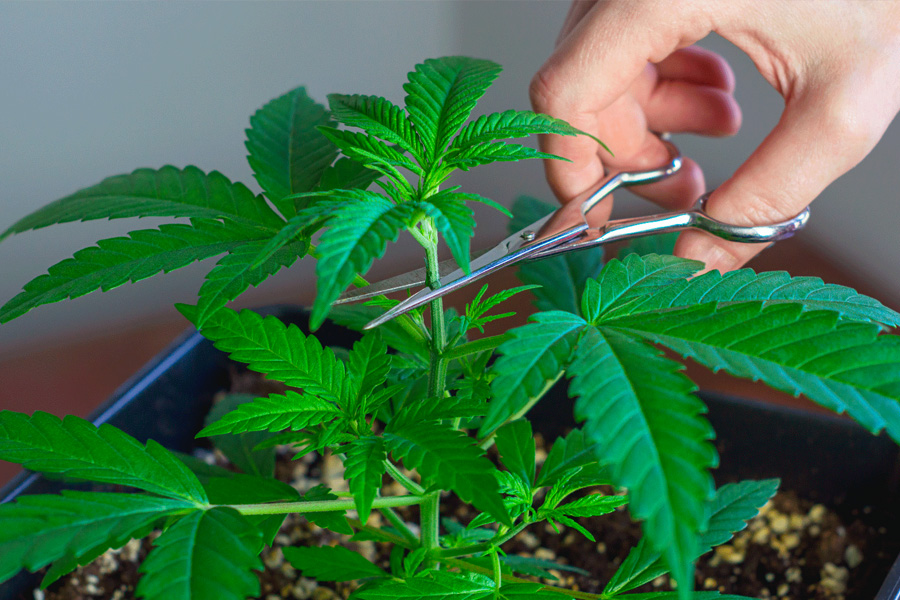Cannabis cultivation requires careful attention to plant structure and growth to ensure optimum flower quality and yield. In its natural form, cannabis plants exhibit strong apical dominance, resulting in uneven flower development from top to bottom. To address this, growers employ the techniques of topping and trellising to promote more uniform growth and maximize the production of top-quality buds. In this blog post, we will explore the concepts of topping and trellising and their significance in cannabis farming.
Topping – A Key Technique for Enhancing Cannabis Growth
Native cannabis plants tend to form a single dominant stem, limiting light penetration and nutrient distribution to lower branches. By employing the topping technique, growers can manipulate the plant’s shape and encourage lateral branching. Topping cannabisinvolves removing the topmost stem early in the plant’s growth cycle. This process can be repeated multiple times, producing a bushier structure with multiple branches. By doing so, growers can achieve more even growth and prevent imperfect bud formation on lower branches. The result is a field dominated by top-quality flowers.
Trellising – Supporting and Training Cannabis Plants
To further optimize cannabis growth and enhance overall flower production, growers utilize trellising. A trellis is a structure, typically made of wood or metal, with a framework of crossbars designed to support and guide plant growth. In cannabis cultivation, a plant trellis helps create an organized canopy and ensures that all plants receive adequate exposure to light. Trellising also facilitates air circulation, reducing the risk of mold and disease. Among the various materials available for trellising, the t-post stands out as a popular choice due to its cost-effectiveness and ease of implementation.
The Benefits of Topping and Trellising
By incorporating topping and trellising into cannabis farming practices, growers can reap several benefits. First and foremost, these techniques promote more uniform growth and minimize the stratification of flower quality and maturity. By redirecting the plant’s energy towards lateral branches, topping results in a higher yield of top-quality buds throughout the field. Trellising, on the other hand, provides a framework for plants to grow vertically and avoid excessive shading, leading to better light exposure and improved bud development.
